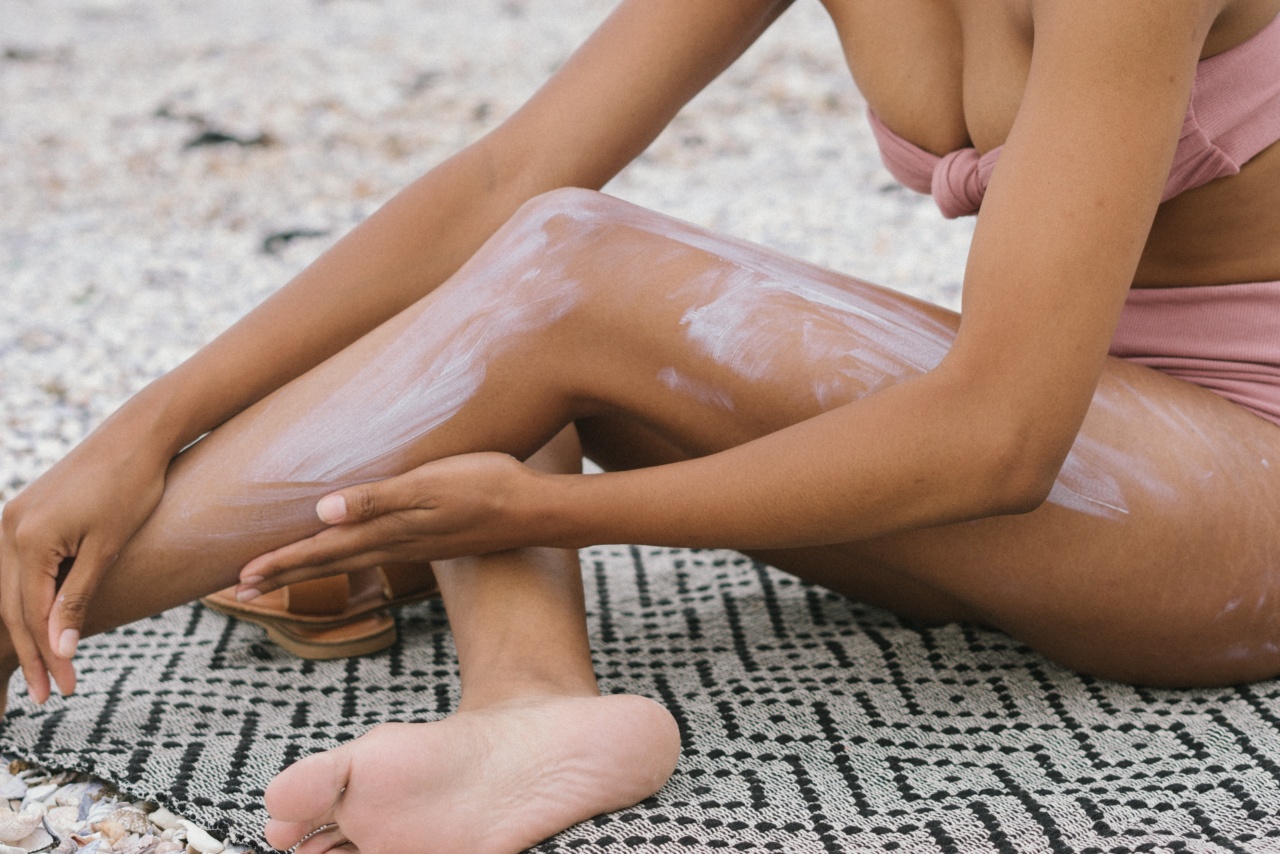Sunbathing is a popular activity enjoyed by many individuals around the world. The warmth of the sun’s rays on your skin can be soothing, and getting a tan can make you feel more confident and relaxed.
However, it is essential to be mindful of the hours you spend under the sun. The time of day when you choose to sunbathe can have a significant impact on your health and well-being. In this article, we will explore why certain sunbathing hours should be approached with caution and the measures you can take to protect yourself.
The Dangers of Midday Sun
One of the crucial aspects to be aware of when sunbathing is the intensity of the sun’s rays. Between the hours of 10 am and 4 pm, the sun is typically at its highest point in the sky, resulting in more direct and intense sunlight.
During these hours, the risk of sunburn is higher, as the UV rays penetrate the skin more deeply. Exposing yourself to the sun during these peak hours increases your chances of developing sunburn, skin cancer, and premature aging.
Morning Sunshine: A Safer Option
If you enjoy sunbathing but want to minimize the risks associated with intense sunlight, opting for the morning hours can be a safer choice.
Early morning sun, generally before 10 am, has lower UV radiation levels and can provide a gentle warmth without severe consequences. This time of day offers a more enjoyable experience with a reduced risk of sunburn and skin damage.
Afternoon Sun: A Moderate Approach
For those looking to extend their sunbathing hours into the afternoon, it is crucial to exercise caution and moderation. Post 4 pm, the sun begins to descend, causing the intensity of UV rays to reduce gradually.
However, even though the sunlight is less potent, it is still crucial to protect your skin adequately. Applying sunscreen, wearing protective clothing, and using sunglasses and hats can help shield your skin from potential harm.
Getting the Right Amount of Vitamin D
Sun exposure is also essential for the body’s production of vitamin D, a crucial nutrient that aids in the absorption of calcium and promotes healthy bone growth. However, it is essential to strike a balance and avoid overexposure to the sun.
Just a few minutes of sunlight per day, outside peak hours, can provide your body with the necessary vitamin D without putting your skin at significant risk.
Sun Safety Measures
Regardless of the time of day you choose to sunbathe, it is crucial to prioritize sun safety. Here are some measures you can take to protect yourself from the harmful effects of UV rays:.
1. Apply Sunscreen
Choose a broad-spectrum sunscreen with a sun protection factor (SPF) of at least 30. Apply it generously on all exposed skin areas, including your face, neck, arms, and legs.
Remember to reapply every two hours, especially after swimming or excessive sweating.
2. Seek Shade
Whenever possible, seek shade during peak sun hours. Trees, umbrellas, and shelters can provide protection from direct sunlight, reducing your risk of sunburn and other skin damage.
3. Wear Protective Clothing
Cover up with loose-fitting, light-colored clothing that can effectively block the sun’s rays. Opt for long-sleeved shirts, long pants, and wide-brimmed hats that provide shade to your face, neck, and ears.
4. Use Sunglasses
Protect your eyes by wearing sunglasses that offer 100% UV protection. Prolonged exposure to bright sunlight can lead to cataracts and other eye conditions, so it is crucial to shield your eyes with appropriate eyewear.
5. Hydrate Your Body
Remember to stay hydrated by drinking plenty of water before and during your sunbathing session. Excessive sun exposure can cause dehydration, leading to fatigue, dizziness, and other heat-related illnesses.
6. Regular Skin Checks
It is essential to conduct regular self-examinations of your skin to identify any changes or abnormalities. Keep an eye out for new moles, changes in shape or color, or any unusual growths.
Early detection of skin cancer greatly increases the chances of successful treatment.
Importance of Sunscreen
When it comes to sun protection, sunscreen plays a vital role. It acts as a protective barrier against harmful UV rays, preventing them from damaging your skin.
Sunscreen should be an integral part of your daily skincare routine, regardless of whether you plan to sunbathe or not. It is recommended to choose a broad-spectrum sunscreen that protects against both UVA and UVB radiation.
Remember to apply sunscreen generously at least 15 minutes before heading out into the sun. Don’t forget to cover all exposed areas, including easy-to-miss spots like the ears, back of the neck, and top of the feet.
Reapply sunscreen every two hours and immediately after swimming or excessive sweating.
Sunburn Remedies
Despite our best efforts, sometimes sunburn may still occur. If you find yourself with sunburned skin, here are some remedies to alleviate the discomfort:.
1. Cool Compress
Apply a cool compress or take a cool bath to soothe the burned skin. This helps alleviate pain, reduce inflammation, and provide temporary relief.
2. Hydrate
Drink plenty of water and apply a moisturizer to replenish your skin’s moisture. Sunburn draws fluids to the surface of the skin, which can lead to dehydration. Staying hydrated helps expedite the healing process.
3. Over-the-Counter Relief
Over-the-counter pain relievers like ibuprofen or aspirin can help reduce pain, inflammation, and discomfort caused by sunburn. Follow the instructions provided on the packaging.
4. Aloe Vera
Aloe vera gel is a natural remedy known for its soothing properties. Apply a generous amount of pure aloe vera gel to your sunburn to provide relief and promote healing.
5. Avoid Peeling
If your sunburn causes peeling skin, avoid picking or peeling it yourself. Let the skin naturally heal and avoid further damage or potential infection.
Conclusion
While sunbathing can be a pleasant and enjoyable experience, it is essential to be cautious of the hours you spend under the sun. The intensity of the sun’s rays varies throughout the day, with midday hours posing the greatest risk.
Opt for early morning or late afternoon sunbathing sessions to minimize the potential harm to your skin. Remember to protect yourself by applying sunscreen, seeking shade, and wearing protective clothing. By selecting the right sunbathing hours and following sun safety measures, you can enjoy the warmth of the sun without compromising your health.


























